
Domaine de Chevalier Wines
The magnificent Domaine de Chevalier is at the top of Bordeaux's greatest Crus Classés. Like a secret garden, this emblematic vintage of the Pessac-Léognan appellation is located in a green setting...Read More

In-Stock

In-Stock

In-Stock
Rothschild 2023

In-Stock

In-Stock

In-Stock

In-Stock

In-Stock

Stock currently at the producing estate – Will ship after 21 March 2026

In-Stock

In-Stock

In-Stock

En Primeur Wines – delivery in early 2027

In-Stock

En Primeur Wines – delivery in early 2027

In-Stock

In-Stock

In-Stock

En Primeur Wines – delivery in early 2027

In-Stock

In-Stock

En Primeur Wines – delivery in early 2027

In-Stock

Stock currently at the producing estate – Will ship after 22 January 2026

In-Stock

In-Stock

Stock currently at the producing estate – Will ship after 22 March 2026

In-Stock

In-Stock

In-Stock

In-Stock

Stock currently at the producing estate – Will ship after 22 January 2026

In-Stock

Stock currently at the producing estate – Will ship after 22 January 2026

Stock currently at the producing estate – Will ship after 22 January 2026

Stock currently at the producing estate – Will ship after 22 January 2026

Stock currently at the producing estate – Will ship after 22 January 2026

Stock currently at the producing estate – Will ship after 22 January 2026

Stock currently at the producing estate – Will ship after 22 January 2026

Stock currently at the producing estate – Will ship after 22 January 2026

Stock currently at the producing estate – Will ship after 22 January 2026

Stock currently at the producing estate – Will ship after 22 January 2026

Stock currently at the producing estate – Will ship after 22 January 2026

Stock currently at the producing estate – Will ship after 22 January 2026

Stock currently at the producing estate – Will ship after 22 January 2026
Domaine de Chevalier | A Secret Garden in Graves
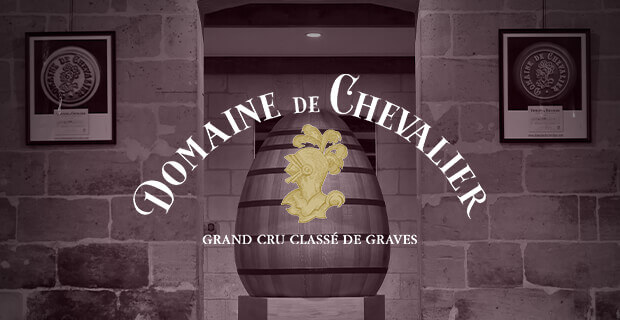
“A vertical tasting of the last thirty vintages showed the wine’s unmistakable personality year after year. Man is only a facilitator... the terroir is, by far, the most important thing.” When the Bernard family purchased Domaine de Chevalier in 1983, his aim was to bring the Pessac-Léognan estate into the new millennium, while also respecting its illustrious past as a self-sustaining “domaine,” a place where the daily life of residents was harmoniously intertwined with agricultural activities and wine production. Behind the newly renovated, state-of-the-art winery and the expertise of a highly skilled, dedicated team is the remarkable terroir of this “secret garden in the Graves.” A vast array of parcels surrounded and protected by forest, Domaine de Chevalier is truly unique estate in Bordeaux, worthy of its prestigious Grand Cru Classé de Graves title.
The History of Domaine de Chevalier: The Birth of a Graves Classified Growth
The history of Domaine de Chevalier can be traced back to the 17th century. Archives from this time refer to the property as “Domaine de Chivaley,” a versatile family estate that included residences, gardens, grounds, woods, meadows and vines. Here, the family’s day-to-day life coexisted in harmony with agricultural activities, including wine production and the cultivation of a variety of crops. The name “chivaley,” meaning “knight” in Gascon, is believed to be linked with an old pilgrim trail found near the estate, leading to Santiago de Compostela. In those days (and still today), the estate was surrounded by woodland, a fact that would later contribute to its nickname: a “secret garden in the Graves.”
The reputation Domaine de Chevalier enjoys today is credited – first and foremost - to the estate’s remarkable terroir, but also to the fact that it has enjoyed only a few very ambitious owners in its relatively short yet illustrious history. In 1865, the property was acquired by Arnaud and Jean Ricard. It was Jean Ricard who set the foundations for the estate, forging a signature style with the help of his son-in-law Gabriel Beaumartin, who helped crystallise its reputation as one of the top wine producers in Bordeaux. In 1948, Claude Ricard took over at the helm of Domaine de Chevalier. With his great passion for and encyclopaedic knowledge of winegrowing, he managed to elevate the quality of the estate’s wines even further, to the point of becoming one of the elite Grand Crus in the 1953 classification of Graves. It was under his leadership, which lasted an impressive 35 years, that Domaine de Chevalier gained an international following.
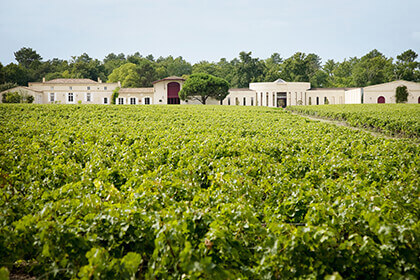
In 1983, the Bernard family purchased Domaine de Chevalier from the Ricard family and Claude Ricard stayed on for an additional 5 years as a close advisor to Olivier Bernard, the current owner of the property. Until 1983, the Bernard family specialises in the commercialisation of Bordeaux Classified Growths and grape brandy. When Olivier Bernard purchased the Pessac-Léognan estate, his motivation was clear. He aimed, from the onset, to come up with a long-term approach to allow him to further the 120-year legacy of Domaine de Chevalier by maintaining the family traditions and history behind it. Through a series of major investments, the vineyard was significantly expanded, new buildings constructed and the winery prepared for the new millennium.
The renovation of the buildings took place in two stages, beginning in 1984 and 1991. With both technical aspects and aesthetic in mind, the “pseudo-classic” style was rejected in favour of functional simplicity. Nevertheless, many of the estate’s original features were maintained, including the double doors gracing the façade of the central building. A remarkable new vat room was also constructed, quickly becoming the heart of the cellar. The state-of-the-art equipment is housed in this cylindrical space with a passageway of metal and glass leading to the top of the vats. The highlight of the room, however, is the glass dome, which allows plenty of natural light to filter into the room. The Domaine de Chevalier vat room presents a perfect example of functional beauty, one unique in the Pessac-Léognan appellation and Bordeaux in general.
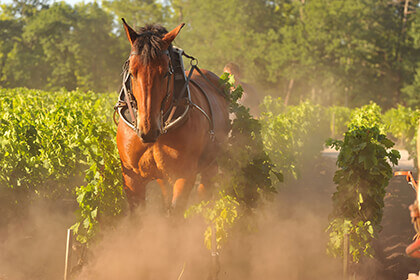
In the almost four decades that have passed since the acquisition, many things have changed at Domaine de Chevalier. Yet one thing has remained consistent: the long-term commitment that binds Olivier Bernard to his historic domain, and his never-ending quest to achieve quality and balance in estate’s signature wines.
The Domaine de Chevalier Terroir: A Secret Garden in the Graves
The Domaine de Chevalier estate covers roughly 100 hectares, of which around 50 are currently under vine. Of these 50 hectares, 44 are dedicated to the cultivation of red wine grape varieties and 6 to white grapes. One of the most unique aspects of the Domaine de Chevalier vineyard is that it is surrounded by a forest, which enhances naturally occurring thermal contrasts. During the summer, the forest exerts a greenhouse effect on the vineyard, trapping the heat and allowing the grapes to ripen, often quite early in the season. However, the forest also traps the cold temperatures during the winter, increasing the risk of frost at the beginning of the growing season. The surrounding forest provides habitat to a number of species that are beneficial to the vineyard, including a variety of insects. In this way, the two ecosystems – that of the vineyard and the adjacent forest – are naturally linked, moving in synchrony.
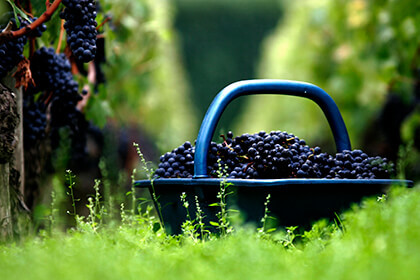
The vines are planted at a high density of 10,000 vines per hectare, resulting in low yields of high-quality fruit with thick skins and concentrated aromas. These vines, around 30 years old on average, stretch their roots deep into the Domaine de Chevalier terroir, dominated by the signature gravelly soils of Pessac-Léognan. The estate vineyard is planted with 61% Cabernet Sauvignon, 28% Merlot, 9% Petit Verdot and 2% Cabernet Franc for the reds, and 70% Sauvignon Blanc and 30% Sémillon for the whites. In caring for these precious vines, the Domaine de Chevalier team treats each plot as a unique entity, with nutrients that satisfy the specific needs of each piece of land. Towards the end of the summer, great care is taken to decide the harvest date for each plot, based on thorough laboratory analyses and taste tests of fruit of each.
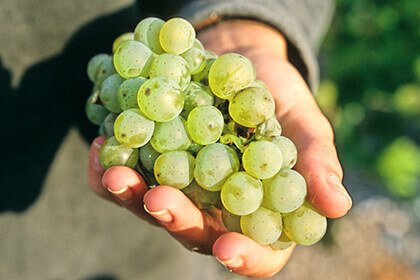
The white wine grapes at Domaine de Chevalier are usually picked at the beginning of September, around 2 weeks before the reds. The harvest is carried out in several waves of picking, with only around 10-30% of the total crop in each plot harvested in each pass. This very important task is carried out by a well-trained team of 35 pickers who come back each year and thus have an intimate knowledge of the various plots. The clusters are collected in small crates of 30 kg max in order to avoid crushing the fruit too early. The red grape harvest begins mid-September with Merlot, followed by the Cabernet Sauvignon in the first half of October. The fruit is sorted three times. The pickers do a preliminary sorting in the vineyards. Then, a special sorting table sorts the fruit upon arrival to the winery. Finally, a third sorting is carried out following the destemming process. This precision ensures only the best, ripest grapes are used to produce the wines of Domaine de Chevalier.
In the Barrel : Winemaking at Domaine de Chevalier
Once sorted, the grapes are gently crushed and gravity-fed into the vats. No pumps are used, in order to keep the sensitive skins as whole as possible. At Domaine de Chevalier each step of the winemaking process takes place in oak barrels, as a way of fine-tuning the blend.
The white grapes are first added into pneumatic presses and gently pressed. The must is then run off its lees into barrels and stored in a refrigerated room for settling. In fact, the lees of the white grapes at Domaine de Chevalier are of very high quality and often retained and treated with batonnage (lees stirring) during the winemaking process. After around 24 hours, the must is taken off its lees by means of gravity flow. The barrels, of which roughly 30% are new each year, are then taken into the fermentation area, and the wines inside ferment, often reaching up to 27 or 28° C in the process. The very meticulous blending process takes place in January and requires the combined effort of the entire management team and consulting oenologist Denis Dubourdieu. Finally, the wine is matured on its lees until the end of the summer and then spends an additional year in barrel before being clarified and slightly filtered.
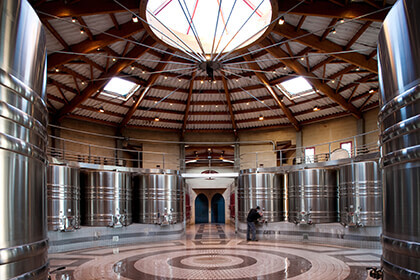
The red grapes are handled with very moderate extraction in order not to mask the character of the fruit. After 4-6 days of pre-fermentation maceration, fermentation takes place in stainless steel vats which are small in order to accommodate parcel-by-parcel vinification. The wine is regularly pumped over the cap (remontage) and the cap punched down (pigeage). The wine remains on its skins for 15-25 days depending on the character of the fruit and the vintage, before being run off into new oak barrels for malolactic fermentation. The blending, once again, takes place in January. Depending on the vintage, around 40-60% of the base wine produced go into the Domaine de Chevalier Grand Vin rouge. The estate’s namesake First Wine is matured for 14-24 months in oak barrels, which are 40-60% new depending on the requirements of the vintage. The barrels are racked by gravity flow and the wine is bottled in late June. The Second Wine of Domaine de Chevalier, Esprit de Chevalier, is matured for only around 12 months in barrels with two previous uses, while the estate’s Third Wine matures 10 months in barrels of 2-4 previous uses.
… And the Result : The Signature Wines of Domaine de Chevalier
“I am quite fond of the English expression “very fine” – an admirably concise way of describing a great wine. It conveys not only the idea of exceptional quality, but also of finesse, balance, elegance, and complexity…” says Olivier Bernard. And the wines of Domaine de Chevalier are “very fine” indeed.
At Domaine de Chevalier, a combination of great terroir with expert savoir-faire gives rise to exquisite wines, built to age. The estate’s white wines are beautifully fresh and light, with a very persistent aftertaste, which unfolds slowly. These wines aren’t necessarily meant to highlight fruitiness alone, but instead are complex and nuanced, with a bouquet of empyreumatic notes (resin, liquorice, coffee, cedar and cigars) along with ripe quince, apricot and tropical fruit aromas. Floral fragrances of dried verbena linger as well. On the palate, the Domaine de Chevalier white is velvety, rich and highly concentrated. This is a white that can withstand many years of ageing and should be decanted two or three hours before serving, if from a vintage less than ten years old.
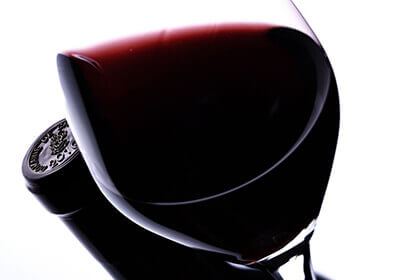
The Domaine de Chevalier reds stand out for their flawless structure, as well as their finesse, complexity and potential for age. On the nose, these wines offer a luscious bouquet of smooth fresh and stewed fruit, along with liquorice, spices and cashew nuts. Fine, tightly knit tannins embrace the palate, lingering until the finish which highlight delicacy over power.
As Olivier Bernard often says, the wines of Domaine de Chevalier are in fact “vins de table,” in that they shine brightest on the table, paired with carefully selected dishes and enjoyed in the company of close friends and family.